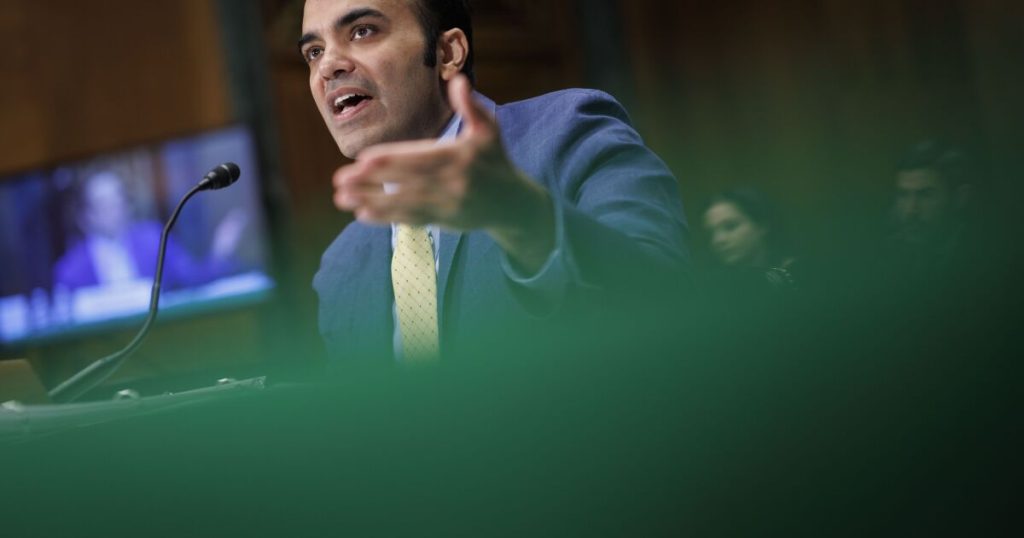Bloomberg News
The Consumer Financial Protection Bureau sued Zelle and three of the largest banks—Bank of America, JPMorgan Chase, and Wells Fargo — for failing to protect consumers from widespread fraud that the bureau says led to hundreds of millions of dollars in consumer losses on the bank-owned peer-to-peer payment network.
The CFPB announced a lawsuit against Bank of America, JPMorgan Chase, Wells Fargo, and Early Warning Services — Zelle’s operator — for enabling systemic fraud. The three banks’ customers have lost more than $870 million over the network’s seven-year existence, and even though hundreds of consumers have filed fraud complaints, the banks allegedly failed to properly investigate the fraud complaints and denied assistance.
Though Early Warning Services is owned by seven big banks, the bureau said it sued the three largest because they represent 73% of all Zelle network activity. The CFPB’s
“This is about financial institutions fulfilling their basic obligations to protect customers’ money and help fraud victims recover their losses,” CFPB Director Rohit Chopra said on a call Friday morning with reporters. “These banks broke the law by running a payment system that made fraud easy and then refusing to help the victims. Consumers couldn’t protect themselves, they couldn’t control how the banks ran Zelle and couldn’t reverse unauthorized transfers once they were sent, and had nowhere to turn when the banks denied their fraud claims.”
The CFPB has been investigating payment networks since 2021.
The CFPB’s investigation uncovered two major patterns of fraud in which criminals took over consumers’ accounts. Some criminals would obtain one-time passcodes to take over customer bank accounts and drain funds. Others would physically steal cell phones with banking apps installed and then immediately make unauthorized transfers.
Chopra said that “in case after case, banks routinely denied requests for help, turning a blind eye, even when customers provided clear evidence that criminals had taken over their accounts and that the transactions were unauthorized, including police reports, documenting the crime.”
Some consumers were even told to contact the fraudsters directly in order to recover their money, the bureau said.
Chopra said the largest banks rushed to launch Early Warning Services because of competition from Venmo, Cash App and other payment apps. By 2015 Venmo was processing over $7 billion in payments and “this competitive threat triggered fear in the boardrooms of big banks,” Chopra said.
“Our investigation revealed that the bank’s chaotic rush to market led to serious failures in fraud prevention and customer protection,” Chopra said. “What they built became a gold mine for criminals, a system that made it easy for fraudsters to move money quickly while making it nearly impossible for victims to get their money back.”
Jane Khodos, a Zelle spokesperson, said the CFPB’s attacks are “legally and factually flawed, and the timing of this lawsuit appears to be driven by political factors unrelated to Zelle.”
She said that by requiring banks to pay for the actions of criminals, thousands of financial institutions will be forced to choose between offering Zelle or increasing fees for consumers to move money and pay everyday expenses. The CFPB’s lawsuit will “unfairly shift the financial burden of criminal activity” to banks.
“Zelle leads the fight against scams and fraud and has industry-leading reimbursement policies that go above and beyond the law,”she said. “The CFPB’s misguided attacks will embolden criminals, cost consumers more in fees, stifle small businesses and make it harder for thousands of community banks and credit unions to compete.”
The number of customers affected and amount of fraud committed are significant. At Chase, the CFPB estimates 420,000 customers lost $360 million due to Zelle fraud; at B of A, 210,000 customers lost $290 million, and at Wells, 280,000 customers lost $220 million.
The CFPB filed the lawsuit in the U.S. District Court for the District of Arizona, alleging violations of the Consumer Financial Protection Act and the Electronic Fund Transfer Act and Regulation E.
More than 143 million consumers transferred roughly $481 billion using Zelle in the first half of this year, the bureau said. The Zelle network allows near-instant electronic money transfers through linked email addresses or U.S.-based mobile phone numbers, known as “tokens.” It is co-owned by Bank of America, Capital One, JPMorgan Chase, PNC Bank, Truist, U.S. Bank, and Wells Fargo.
The CFPB said that the banks took eight years since Zelle’s launch in 2017 to identify and put in place anti-fraud protections such as authenticating and identifying recipient names, fraud reporting, monitoring transfers and identifying and blocking bad actors from the network.
Early Warning Services and the banks were slow to restrict and track criminals and did not share information about fraudulent transactions with other banks, which allowed criminals to repeat the fraud at multiple banks, the bureau said in the lawsuit.

